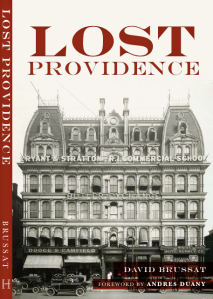This past weekend we took in the Van Gogh exhibit, called “Beyond Van Gogh: The Immersive Experience,” that has taken the country by storm these last few months. Van Gogh isn’t quite my cup of tea, but I was prepared to be impressed by the exhibit’s alleged technical virtues. Alas, they were pretty staid: mostly static images from paintings moving across the walls inside the Rhode Island Civic Center, bits shimmering here and there, and quotations from the artist intending to be both uplifting and noncontroversial – noting, for example, that Van Gogh was “nonplussed by the classical canon.”
Really? Van Gogh? Who’d have thought?
Today I am tasked with reviewing a poet’s newly published book of modernist poetry about a long list of modernist artists – all except for Van Gogh, it turns out. No killing two flights of fancy with one stone. Michael Curtis is the poet. He is the research fellow at the Washington, D.C.-based National Civic Art Society. He is also a sculptor, painter, historian and architect (and quite good at all of the above) in addition to being a talented poet. (His website is theclassicalartist.com.)
Modern Art: An Exhibition in Criticism, published by the NCAS, contains 80 poems in quirky modernist styles apparently intended, in their verse as well as their form, to mock some 80 modernist painters, sculptors and architects – and none too gently. Here is an example, about an early modernist architect:
Joseph Albers squared a theory,
boxed it in motif.
Frames a treatise daft and lifeless,
yucked in Germany.
Flat to read and see.
Black and beige and Bauhaus weary.
Praised to raise the green on priceless
Mad Ave. in N.Y.C.
Another poem, perhaps more typical, reads as follows:
O g E h R y
G e H r Y
g E h R y
G e H r Y g
G e H r Y
e H r y
r Y
g E Y
I chose these two poems to reprint (to the extent my computer allowed) because they are about architects rather than painters or sculptors, but I still don’t really get it. I know only a few of the painters. I’ve spent most of my lifetime seeking to avoid experiencing the works of the moderns. I feel hindered, therefore, in writing this review by trying to interpret poems about painters. I know most of the architects, however, and think maybe I should be able to interpret poems about them, however obscure. I guess not.
The back jacket (a poet and didn’t know it!) helps out somewhat. It reads, in part, that
The author leaves out no cheap trick of meter or rhyme to achieve his ends. He employs adolescent sing-song, doggerel, slanting rhyme [whatever that is] – in short, every mischief-making device he can borrow or invent is used in a manner that would shame lesser poet. Yes, he stoops to conquer.
This is from the back jacket of his own book!
Again, I’m not really sure what to make of this, whether to be impressed by or embarrassed for the poet. I suppose that is the point. Modern art, sculpture, architecture and the rest are designed to confuse the reader or viewer in an effort to undermine his, her and, in general, the public’s capacity for judgment, thus making them easier (for whom?) to manipulate. At least that’s how one theory goes. Perhaps, in criticizing the mods, Michael Curtis has used the method of exposing their methods by pretending to use them himself.
If so, he may claim to have accomplished his mission, whatever it was – if we are even allowed to ask! In fact, I think I feel the same sort of dizziness I felt Sunday after having been surrounded by, immersed in, and emerging from the Van Gogh experience.
(It may not work.)





“…thus making them easier (for whom?) to manipulate.”
The “for whom” would be the elitists who run all of these charades, if I had to make an educated guess.
When I was in architecture school, I had a professor who routinely requested that we attend local modern art exhibits in order to, so he would claim, broaden our minds and enhance our appreciation for the union of art and architecture. He ended up making it a project requirement anyway. I recall he had a particular affinity for black and white imagery and obsession with Gestaltism. Interestingly, when he pressed us on our responses to the exhibitions, none of our responses were worthy enough, and he frequently engaged in intellectual gatekeeping by claiming that we didn’t understand the true nature of the work, while equally claiming that there was no inherent truth to the work. Basically, every response you gave could be outdone by his own interpretation. A lot of my fellow classmates fell for the contradiction, a few of us saw behind the curtain. He was a nice guy, though.
Most modernistic ideas rest on the assumption that everything is subjective and that there is no such thing as truth. Everything is in the eye of the beholder and ultimately superfluous. As I said above, I think this method was invented by people who possess little-to-no talent in order to make people think they are smarter than they really are. More nefariously, when you manipulate people into eschewing things like culture, objectivity, truth, and beauty, you make them easier to control. Disconnected people won’t fight back, and that makes it easier for our “betters” to profit from our apathy.
LikeLike
A theory about the van Gogh ‘experience’.
We have five senses, with these senses we can experience texture, properties like hardness and softness, colour, properties like dark and light, temperature, etc. Only with the eyes and ears we can also appreciate form, appreciate elegance, symmetry, and all kind of things suggested by these forms (expressions of the mind). The capacity of form appreciation is what separates humans from animals, form appreciation is more abstracted, in a way you cannot really sense form like you can sense texture, colour, etc, thus it could be said that form appreciation is not purely sensual. Form is intelligently appreciated (direct or by invoking the intellect), pure sensuality is involuntary ‘experienced’, indulged in, form is appreciated intelligently, pure sensuality is marketed. This van Gogh experience is clearly made for purely sensual experience, everything is pimped for formless experience, or overriding form appreciation (regardless whether much of that is possible in van Gogh’s works). In Ghent, Belgium, in one of the Cathedrals there was a virtual tour for the tourists, where they can experience some paintings (Lamb of God) in a way which is about pimping the purely sensual experience by means of technology, allowing the tourist to indulge himself in an impressive sensualized experience (and this in a church, haha). Another example was a light-show in Ghent, in the evening, where the traditional buildings were bizarrely pimped with colours (while your nose indulged in a thick air of junk food).
Pimping the sensual is also expressed in modern culture through large flatscreens and their pimped colours, cinema sound, (pimped sound), virtual realities, junk food culture, audiophile culture, etc. Art has a sensual side, but form appreciation, appeal to the higher capacities of the two highest or most intelligent senses was normally it’s primary goal, which goes down the drain in a sensualist culture. This is why they stress ‘the experience’ the whole time, as it is about purely sensual experiences. The senses get used to sensual experiences, become tired, while form appreciation is fresh and intense every time when the mind is fresh and sensible, purely sensual experiences needs to be pimped in order to keep on experiencing something. Form also satisfies the mind,purely (formless) sensual experiences are ultimately dissatisfactory in that respect, so ever more is required. Form appreciation requires active sensibility of the mind, while purely sensual experience requires only passive indulgence, the more passive, the more intense the purely sensual experience.
Thus, on visiting the ‘van Gogh experience’ and events like that in the cathedral in Ghent, one should shut up the intellect completely and silence all directly appreciative sensible intelligence. One should not try to make any sense of it, or see any sense in it. And afterwards you go take a bite at MacDonalds, which is probably just around the corner.
LikeLike